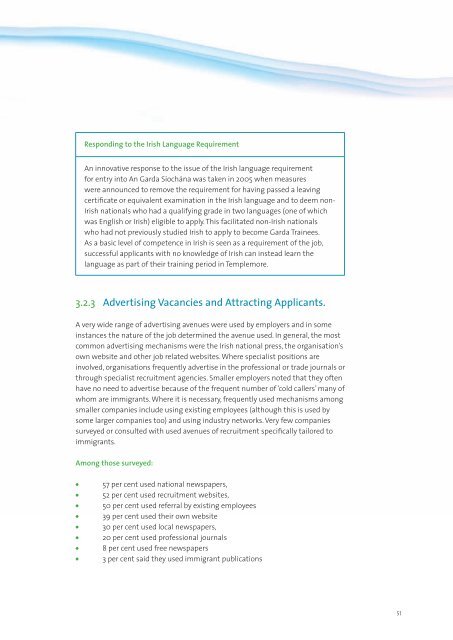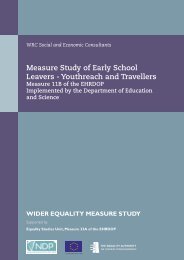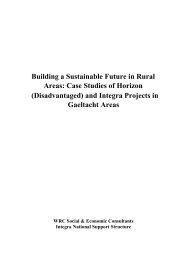Issues and Challenges in the Recruitment and Selection of ...
Issues and Challenges in the Recruitment and Selection of ...
Issues and Challenges in the Recruitment and Selection of ...
Create successful ePaper yourself
Turn your PDF publications into a flip-book with our unique Google optimized e-Paper software.
Respond<strong>in</strong>g to <strong>the</strong> Irish Language RequirementAn <strong>in</strong>novative response to <strong>the</strong> issue <strong>of</strong> <strong>the</strong> Irish language requirementfor entry <strong>in</strong>to An Garda Síochána was taken <strong>in</strong> 2005 when measureswere announced to remove <strong>the</strong> requirement for hav<strong>in</strong>g passed a leav<strong>in</strong>gcertificate or equivalent exam<strong>in</strong>ation <strong>in</strong> <strong>the</strong> Irish language <strong>and</strong> to deem non-Irish nationals who had a qualify<strong>in</strong>g grade <strong>in</strong> two languages (one <strong>of</strong> whichwas English or Irish) eligible to apply. This facilitated non-Irish nationalswho had not previously studied Irish to apply to become Garda Tra<strong>in</strong>ees.As a basic level <strong>of</strong> competence <strong>in</strong> Irish is seen as a requirement <strong>of</strong> <strong>the</strong> job,successful applicants with no knowledge <strong>of</strong> Irish can <strong>in</strong>stead learn <strong>the</strong>language as part <strong>of</strong> <strong>the</strong>ir tra<strong>in</strong><strong>in</strong>g period <strong>in</strong> Templemore.3.2.3 Advertis<strong>in</strong>g Vacancies <strong>and</strong> Attract<strong>in</strong>g Applicants.A very wide range <strong>of</strong> advertis<strong>in</strong>g avenues were used by employers <strong>and</strong> <strong>in</strong> some<strong>in</strong>stances <strong>the</strong> nature <strong>of</strong> <strong>the</strong> job determ<strong>in</strong>ed <strong>the</strong> avenue used. In general, <strong>the</strong> mostcommon advertis<strong>in</strong>g mechanisms were <strong>the</strong> Irish national press, <strong>the</strong> organisation’sown website <strong>and</strong> o<strong>the</strong>r job related websites. Where specialist positions are<strong>in</strong>volved, organisations frequently advertise <strong>in</strong> <strong>the</strong> pr<strong>of</strong>essional or trade journals orthrough specialist recruitment agencies. Smaller employers noted that <strong>the</strong>y <strong>of</strong>tenhave no need to advertise because <strong>of</strong> <strong>the</strong> frequent number <strong>of</strong> ‘cold callers’ many <strong>of</strong>whom are immigrants. Where it is necessary, frequently used mechanisms amongsmaller companies <strong>in</strong>clude us<strong>in</strong>g exist<strong>in</strong>g employees (although this is used bysome larger companies too) <strong>and</strong> us<strong>in</strong>g <strong>in</strong>dustry networks. Very few companiessurveyed or consulted with used avenues <strong>of</strong> recruitment specifically tailored toimmigrants.Among those surveyed:• 57 per cent used national newspapers,• 52 per cent used recruitment websites,• 50 per cent used referral by exist<strong>in</strong>g employees• 39 per cent used <strong>the</strong>ir own website• 30 per cent used local newspapers,• 20 per cent used pr<strong>of</strong>essional journals• 8 per cent used free newspapers• 3 per cent said <strong>the</strong>y used immigrant publications51




